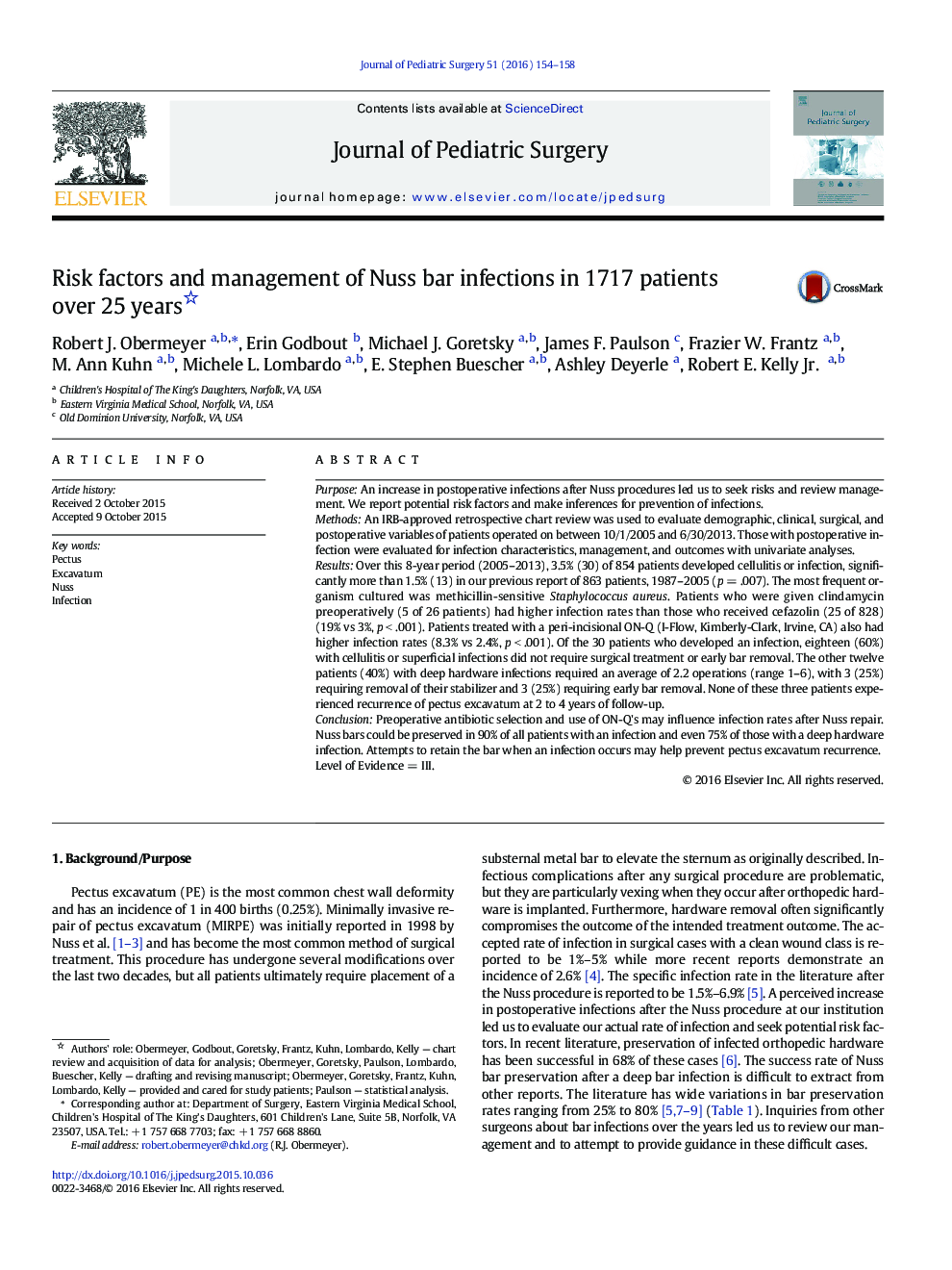| Article ID | Journal | Published Year | Pages | File Type |
|---|---|---|---|---|
| 4154884 | Journal of Pediatric Surgery | 2016 | 5 Pages |
PurposeAn increase in postoperative infections after Nuss procedures led us to seek risks and review management. We report potential risk factors and make inferences for prevention of infections.MethodsAn IRB-approved retrospective chart review was used to evaluate demographic, clinical, surgical, and postoperative variables of patients operated on between 10/1/2005 and 6/30/2013. Those with postoperative infection were evaluated for infection characteristics, management, and outcomes with univariate analyses.ResultsOver this 8-year period (2005–2013), 3.5% (30) of 854 patients developed cellulitis or infection, significantly more than 1.5% (13) in our previous report of 863 patients, 1987–2005 (p = .007). The most frequent organism cultured was methicillin-sensitive Staphylococcus aureus. Patients who were given clindamycin preoperatively (5 of 26 patients) had higher infection rates than those who received cefazolin (25 of 828) (19% vs 3%, p < .001). Patients treated with a peri-incisional ON-Q (I-Flow, Kimberly-Clark, Irvine, CA) also had higher infection rates (8.3% vs 2.4%, p < .001). Of the 30 patients who developed an infection, eighteen (60%) with cellulitis or superficial infections did not require surgical treatment or early bar removal. The other twelve patients (40%) with deep hardware infections required an average of 2.2 operations (range 1–6), with 3 (25%) requiring removal of their stabilizer and 3 (25%) requiring early bar removal. None of these three patients experienced recurrence of pectus excavatum at 2 to 4 years of follow-up.ConclusionPreoperative antibiotic selection and use of ON-Q's may influence infection rates after Nuss repair. Nuss bars could be preserved in 90% of all patients with an infection and even 75% of those with a deep hardware infection. Attempts to retain the bar when an infection occurs may help prevent pectus excavatum recurrence.Level of Evidence = III.
